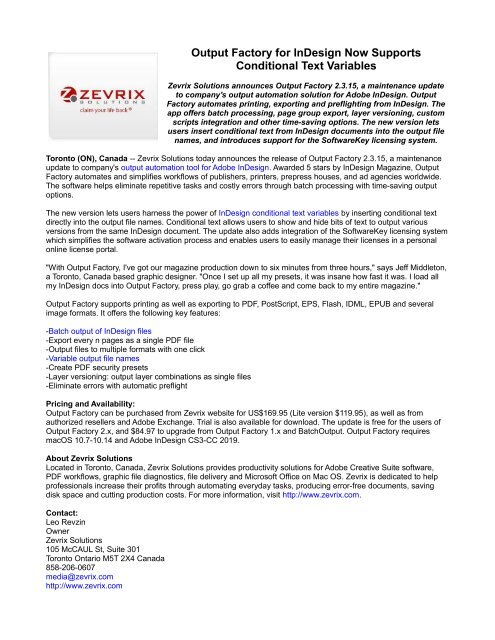

In your case of 4 pages, that is simply 4&1 and 2&3. If they insist on you imposing the document into a printer’s spread (with page n&1 on one side, 2&n-1 on the back side, also known as page 2 of your printer’s spread, and so on until you have page n/2&n/2+1 as the last spread), you can either lay it out like that or use the export booklet feature (or some post-processing imposition solution – I like Rhimposition script for InDesign). Almost any printer, especially one printing on a digital machine, has the ability to “impose” the pages as the last step in their process, so giving them pages 1-n is perfectly fine. This way, we aren’t confused with the difference between reader spreads and printer spreads.
Indesign free trial how to create tabloid size pdf#
When I am asked to print a booklet, I have them output into a pdf from page 1 through page N. The real answer is what does the printer want from you, and what are his capabilities. And when you do, you now have options in the Control panel relevant to your page selection.I work with saddle stitched booklets all the time. You’ve never been able to select pages in the Layout view before. Meaning, the Control panel provides options relevant to the current selection. This tool was added to take advantage of InDesign’s contextual Control panel interface. If you then go back and change the size of the Master Page, as you’d expect, all the pages tagged with that Master Page will inherit the new size.ģ. Then just drag that MP to any other page thumbnail in the Pages panel to change the size of that page. When you add a Master Page to your document, simply choose a size that is different than the document default size. This is actually one of my favorite methods and is especially handy when working with mixed page sizes in a non-facing pages document which Steve mentions he’ll cover in a future post.


Apply a different size Master Page to a regular page. There are several “preset” sizes to choose from, and you can add your own presets to this list.Ģ. Once you have the pages selected in the Pages panel, you can chose a new page size from the pop-up menu at the bottom of the Pages panel. You do not have to switch to the Page Tool first. Select the page(s) in the Pages panel as you always have. There are actually several ways to change the size of a page in ID CS5.ġ. Notice that the master page name “C-Stars” also appears.Īpat 9:02 Falkner: “…why a whole tool to do something that could be accomplished in the Pages panel or through menus?”

In the example below, the yellow star is on the master page, and it’s been moved to center it over the gatefold page. Using the Page tool, click on the border and drag to change where objects from the master page will appear on the document page. When you turn on Master Page Overlay, a purple border indicates the dimensions of the current master page as they are applied to the page. Objects Move with Page makes page objects move with the page if you adjust its position.(3) Finally, you can actually change the position of the master page applied to a page (see below). (2) If a page is a different size than the master applied to it, you can visually see how the master page is positioned relative to the page. This is useful for several reasons: (1) You can see which master page is applied to a page. Show Master Page Overlay shows you the outline of the master page applied to the current page.You’re using the same controls found in Layout > Layout Adjustment. Enable Layout Adjustment gives you control over what happens to objects on the page when a page is resized.On the right side of the Control panel when the Page tool is selected, there are three other controls:


 0 kommentar(er)
0 kommentar(er)
